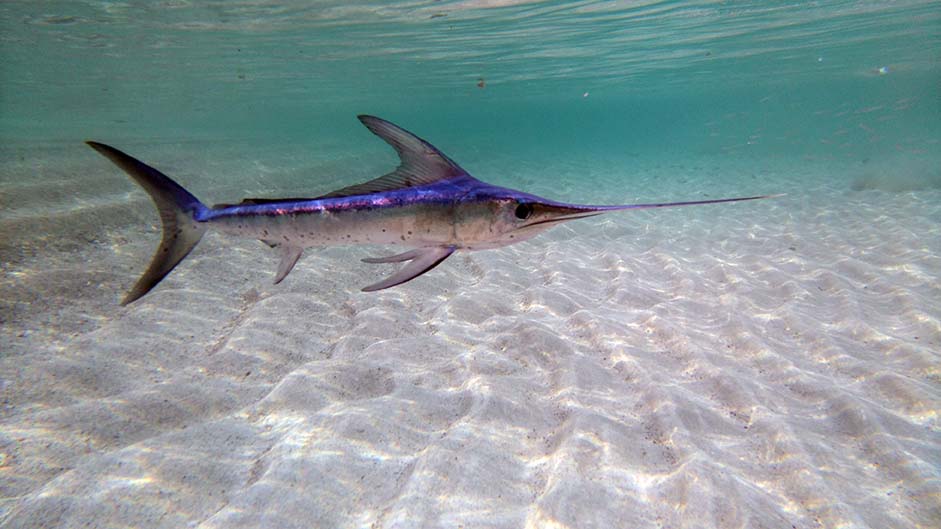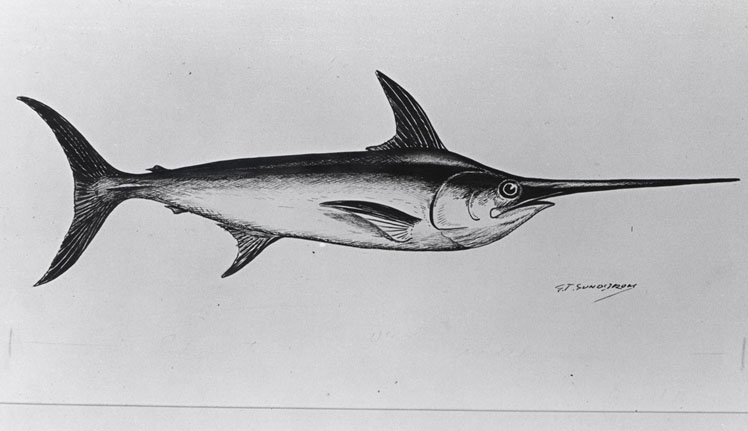Things You Didn’t Know About Swordfish
Swim on over for some swordfish facts

Known in some parts of the world as broadbills, swordfish (Xiphias gladius) are among the fastest and most powerful predatory fish in our ocean. Their iconic bills are literally like swords—long, flat and pointy, with a strength that mystifies scientists. But rather than using their mighty bills as spears, they slash their prey (smaller fish, squid, cuttlefish, for example) just enough to slow them down and have a yummy meal. En garde!
Swordfish are fast, too—supposedly swimming up to 60 mph. Their aerodynamic bodies lose all their scales by adulthood, around 4 to 5 years. Their combined strength and speed make them a formidable force in the ocean and, as such, they have very few predators. As adults, swordfish tend to be attacked only by orcas or mako sharks. In fact, some dead and dying makos are found to have been injured by broken swordfish bills!
Swordfish are no gregarious musketeers, though. Unlike many fish, swordfish avoid schools and ride the ocean solo. They are highly migratory and can be found all around the world in both tropical and cold waters with a temperature range from 41 to 81℉. Although swordfish are ectotherms (cold-blooded animals) they can withstand colder waters, thanks to a specialized organ found near their brains. They have something called a countercurrent heat exchange mechanism in the dorsal rectus muscle in their eyes. In short, this special muscle allows swordfish to literally heat their brains and eyes, making it possible for swordfish to see their prey and think clearly in colder waters.

While they don’t mind if things get a little chilly, swordfish spawn in moderate to tropical climates year-round. Swordfish reproduce via external fertilization, which means the female will release anywhere from 1 million to 30 million eggs into the open water, and the male will then release his sperm. Swordfish start as tiny eggs, about 1.6 mm in diameter, and grow up to 1 meter within their first year! As adults, swordfish reach about 10-15 feet long and about 1,430 pounds.
And even though they migrate around the ocean and can survive in a range of temperature conditions, there are still concerns they are vulnerable to climate change. In fact, some scientific research suggests that the distribution of swordfish has shifted in the last 50 years and that there could be declines in swordfish catches in the future due to climate change. These changes are one reason why it is so important to make sure fisheries and management of fisheries are ready for climate change. Learn about Ocean Conservancy’s work for sustainable fisheries here.